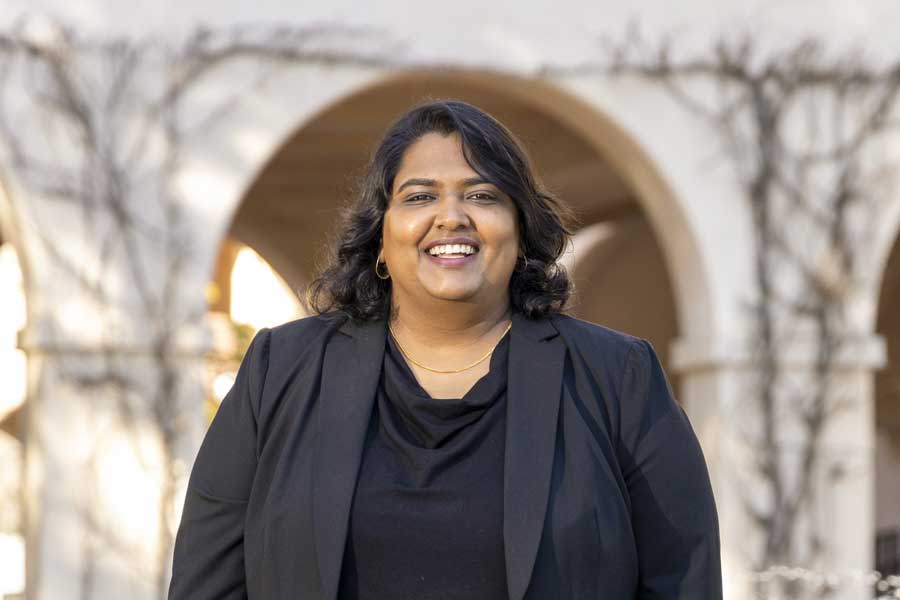Richa Sirohi, B.S. ’18

Young Alumna of the Year
From a young age, Richa Sirohi has been fascinated with understanding our place in the universe. Instead of modeling a single planetary body for an eighth-grade astronomy project, Sirohi chose every planet in the solar system.
Sirohi has been fascinated by space her whole life, but it was at Baylor that she learned she could forge a career in learning more about the universe.
She studied mechanical engineering at Baylor. Her interest in the aerospace industry as a career path was instigated when a SpaceX engineer came to speak to one of her classes at Baylor. The fact that Sirohi does not focus on mechanical engineering in her current role despite her background in mechanical engineering does not matter, she says.
“What Baylor taught me was how to solve a complex problem, and that’s really what engineering is about.”
Although she did not take a direct path from Baylor to working in the aerospace industry, it was not long after graduation that she worked as a systems engineer intern on the Mars Perseverance Rover at NASA Jet Propulsion Laboratory (JPL) in Pasadena, California. Since then, she joined the team full time and has supported the Cold Atom Laboratory, which is now on the International Space Station, worked on the MAIA instrument (multi-angle imager for aerosols) to help understand pollution and its health impacts on a global level, helped to develop a lunar mission concept, and worked as an end-to-end information systems engineer on the Psyche spacecraft.
Sirohi is now the lead end-to-end information systems engineer for a project called NISAR, a spacecraft that will use radar imaging to understand how Earth is changing over the course of many years to help our understanding of climate science and help people worldwide better manage their natural resources.
“It is really about the science,” Sirohi says of her passion for her work. “It’s about enabling our understanding and being a part of the scientific endeavor. Understanding our own home and Earth and the policies and actions we take that impact it is a very big part of why I wanted to pursue a career in aerospace, because the implications on human life are actually vast and meaningful.”
The work of understanding our world and place in it is work that connects all of humanity. Sirohi acknowledges her time at Baylor for fostering cultural understanding while involved in a lot of diversity, equity and inclusion efforts on campus.
“As a woman in STEM, it’s obviously hard at times because I’m a woman of color in a male-dominated field that doesn’t have a lot of South Asian Americans, especially in aerospace. And so I’ve always been really passionate about doing outreach and reaching young women and telling them, you can achieve these things and there is support for you.”
Sirohi uses her position at NASA JPL to invest in the education of young people across the country by giving talks at their schools or museums. She also has connected with Baylor students in both the University’s aerospace organization and the Society of Women Engineers. She remembers when she was in their seat, and didn’t know where she would end up.
“I like to be able to give back, and I like to, in many ways, be someone else’s, some young woman’s definition of what a scientist or an engineer can look like.”